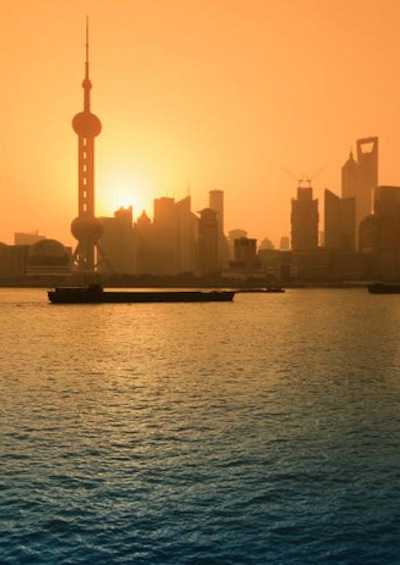Shanghai – A City Hungry for the Future
Shanghai longs for a future that envelops the past.
December 24, 2014

Modern Shanghai did not suffer a slow and cumulative eclipse as did so many of the “cities of the future” in the 20th century. Rather, the city’s early heyday was suddenly, violently and instantaneously interrupted.
Shanghai: In-Depth Look at a Global City
▪ Shanghai – A City Hungry for the Future
▪ Shanghai – Gazing At Its Own Image
▪ Shanghai and China’s Embrace Creativity
▪ Shanghai’s Thames Town
▪ Shanghai: The Underground Economy
▪ Shanghai and Its Environs
▪ Shanghai and Disruptive Innovation
At the beginning of the twentieth century, Shanghai was a crucial site of global modernity. During the 1920s and 1930s, in the city’s golden age, the cosmopolitan metropolis hosted Jews, Russians, French, American, British and Japanese.
The city was also a gathering place for a very diverse group of Chinese migrants from all over the country. It included revolutionary writers, early communists, gangsters and tycoons, who fled the dangers of their native places searching for new opportunities.
1920s Shanghai was one of the great hubs of Art Deco architecture and was a center of the Jazz Age.
Almost all modern technologies came to Asia via Shanghai. Gaslights were introduced in 1865, the telephone in 1881, electricity in 1882, running water in 1884, and the tram in 1901.
Shanghai was known alternatively as the “Whore of the Orient” and the “Paris of the East.”
This history was interrupted by the sudden intensity of unexpected events. The brutality of the Japanese invasion was followed by a regime committed to instantaneous utopia. Mao rejected Marx’s gradual theory of progress, offering instead an immediate revolution.
In 1978, when Deng Xiaoping introduced the revolutionary policies of reform and opening, Shanghai was deliberately left out of the loop. The commercial center was judged too important to be at the forefront of experimentation.
Instead, Deng began by establishing Special Economic Zones, intended to pry open the economy in less central places like Shenzhen and Xiamen. It was not until the winter of 1992 that Shanghai was finally, belatedly, let off the leash.
Pudong as pure expression of Sinofuturism
Pudong lies on the eastern shore of the river that bisects Shanghai. If the supercharged pace of China’s recent rise has a pure expression, it is Pudong. Only 20 years ago, the area was all farmland and factories.
Today, the area is the site of one of the densest clusters of skyscrapers anywhere in the world. When people want a symbol of Sinofuturism, this is where they come.
Pudong has plenty of critics. Many view it as exemplifying the unchecked power of China’s authoritarian regime, which operates from on high, developing cities with little thought about how they are actually going to be used.
Pudong might look good from afar, say its detractors. With its windswept plazas and long empty roads, it is more a place for looking at than for living in.
However, others see in Pudong’s miraculous rise evidence of the positive side of authoritarianism. To them, it is a snapshot portrait of a regime that can build infrastructure with a speed and efficiency that now seems impossible in the democracies of the developed world.
Shanghai and echoes of the past
Puxi, the older part of the city on the western side of the river, is more attuned to the “alternative modernisms” of art deco and expressionism.
In the early decades of the 20th century, the streets of Puxi created a singular style, which must be imaginatively reawakened before the city can truly revive.
Shanghai’s re-imagination of the City of Tomorrow is saturated by a nostalgia for what is to come. Nostalgia is evident, too, in the reanimation of industrial zones that look back as they look forward and the rejuvenation of an urban culture that aims to awaken an older golden age.
Shanghai’s ambitions for the 21st century are suffused with echoes of the past.
As a future city, Shanghai does not gradually arrive out of linear, evolutionary history. It (re)emerges in a temporal spiral out of which the future city reaches back to the past in order to construct itself today.
Editor’s note: The above text is adapted from “Shanghai Future, Modernity Remade,” by Anna Greenspan, London, C. Hurst & Company, 2014.
Takeaways
Shanghai was known alternatively as the “Whore of the Orient” and the “Paris of the East.”
1920s Shanghai was one of the great hubs of Art Deco architecture and was a center of the Jazz Age.
Almost all modern technologies came to Asia via Shanghai – gaslights, telephones, electricity, running water, trams.
At the beginning of the 20th century, Shanghai was a crucial site of global modernity.
Shanghai’s early heyday was suddenly, violently and instantaneously interrupted.
If the supercharged pace of China’s recent rise has a pure expression, it is Pudong.
Shanghai’s ambitions for the twenty-first century are suffused with echoes of the past.

